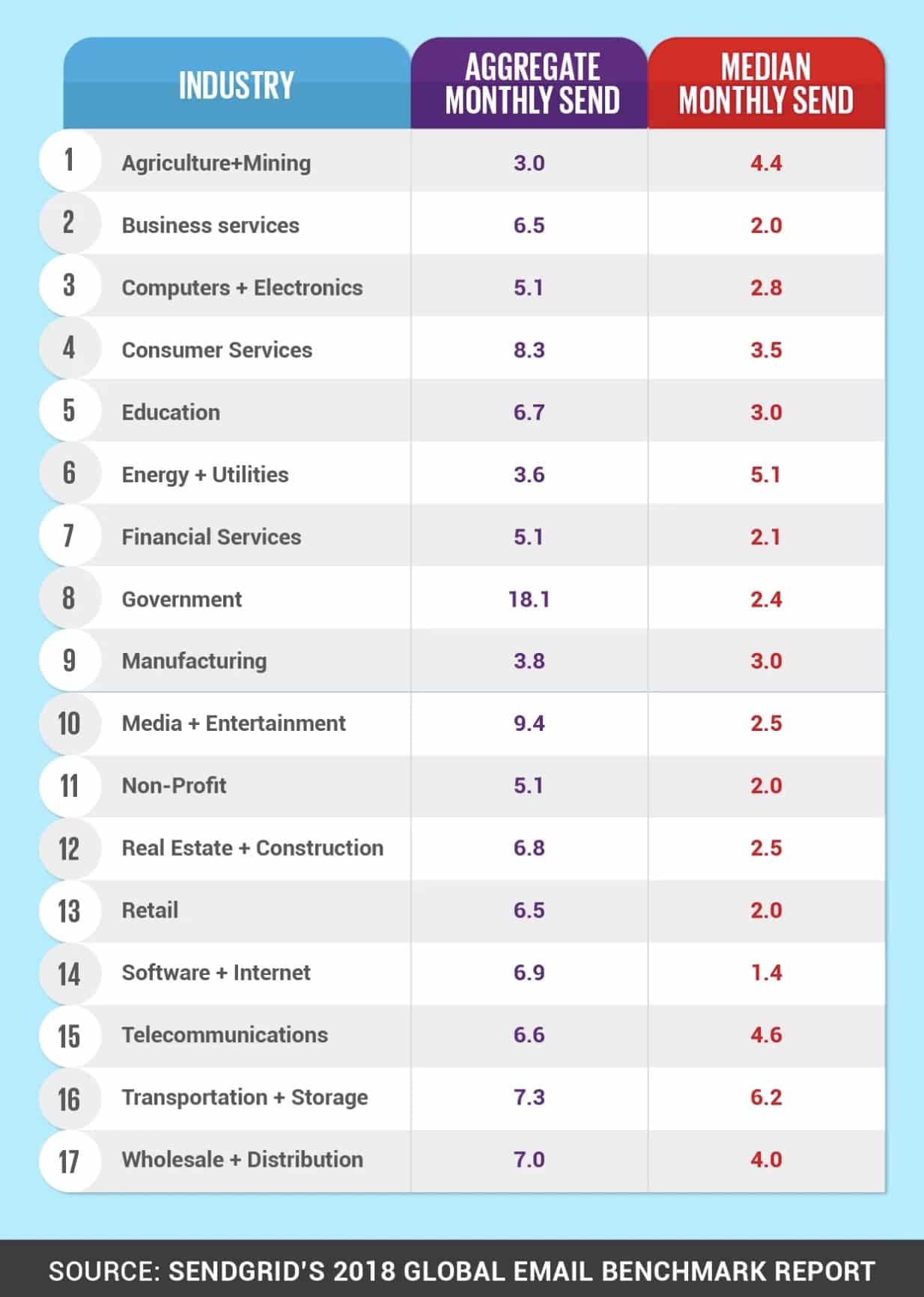I wanted to find out what the best amount of times per month a company should be sending out e-mails, but it’s very hard to sort through all of the BS out there on the internet and boil this down to a succinct answer, so I committed to writing a blog post that got to the nuts and bolts of this very quickly instead of beating around the bush. Here’s what I found:
- The general consensus for B2C (Business to consumer) brands – is that they should be sending email to their lists at least once a month or more. They are considering that people do expect to have deals pitched to them through e-mail, and if they don’t get an e-mail from you for a while, and then do – it might be perceived as spam, but if you hit them up more often they’ll be “used to it.”
- 67% of B2C companies send email 2-5 times per month. So for instance, it would not be crazy to have a bi-weekly or weekly schedule that was a mix of both ‘useful/informational/entertaining’ content and mixed in deals or promoted items.
- For B2B companies, key experts are suggesting t least one email per month (likely for the same reason,) and no more than five, appears to be considered an acceptable range.

Always be testing – and adjusting your times and days based on open rates
We’d suggest being vigorous around testing for the first couple months so that you can have a baseline to confidently send e-mails in the future in a data-driven approach. While you want the content to be fresh, and the creative to get better and better – the days and times, as well as the ideal e-mail frequency for your company, should get tuned up on the front end and then set in stone as a habit, so you can set your sights on bigger and better challenges, not on deciding whether or not to do an e-mail that week or not.
For a while with our e-mail list, we sent a different day of the week, and tried morning, afternoon and night until we got a general idea for what got the highest engagement rate.
That is:
- A. Open rate – I wanted to be above 20 and generally expected to be below 30% for our industry. 30 percent would have been actually really good for a tech/marketing niche.
- B. Click through rate – if it was getting people to click through, which sometimes the e-mails were more about the content in the e-mail and not trying to get people to click through, I was not expecting a super high click-through rate but 2-5% was generally acceptable in our case. Many industries and experts say 2.5% percent is a perfectly acceptable and appropriate click-through rate on average.
Compared against benchmarks – these numbers ring true as Agency average open rate is 22.4% and the average click-through rate is. Check out your industry to see where you stack up, and how you might pull ahead of the pack in certain areas.

How often should YOU Send? It Depends on Your Industry
Government, Media and consumer services related e-mail lists see the most action at 18.1, 9.4, and 8.3 a month respectively (See full table below for your industry), and Agriculture, Manufacturing, and Energy + Utilities have the lowest at 3.0, 3.8, and 3.6.

Feeling a little guilty you haven’t hit up that list in a little while?
Me too.
Let’s look at small business numbers from Omnisend:

In general, the market is a little bit more aggressive with 2-3 and 4-5 getting the lion’s share of businesses citing those numbers:
Clearly, B2C companies are going harder on e-mail on average.

What about companies getting their e-mail spammed. Why do people flag e-mails?

.
What’s the best frequency of e-mail marketing for you?
In an ideal world you could use a blend of looking at the above industry benchmarks for your company – and then testing 2 a month, 4 a month, and 3 a month and seeing if the open rate changes.
The problem – of course, is that there is no perfect test on this, being that you’ll be changing the headlines and content on every e-mail campaign and that content will affect your data.
But I’d still suggest the kind of testing that will give you as close as possible to a chance of getting some idea about whether your list seems to get exhausted after 4 e-mails a month, or if your engagement rates go up since they get more used to seeing you.
If in the end, after 3 e-mails the 4th e-mail has a lower open and click-through rate, you just have to decide whether you’re willing to take the hit a bit for the fact that overall, your open and click through’s are going up… it’s just the percentages that are going down.
This is that saturation point or exhaustion point that could potentially negatively affect your brand though – so it’s not to be taken lightly.















